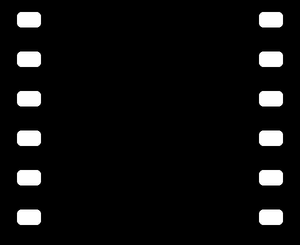Information
- Publication Type: Journal Paper with Conference Talk
- Workgroup(s)/Project(s):
- Date: 2014
- Journal: Eurographics Workshop on Visual Computing for Biology and Medicine
- Lecturer:
Abstract
Efficacy of radiotherapy treatment depends on the specific characteristics of tumorous tissues. For the determi-nation of these characteristics, clinical practice uses Dynamic Contrast Enhanced (DCE) Magnetic ResonanceImaging (MRI). DCE-MRI data is acquired and modeled using pharmacokinetic modeling, to derive per voxela set of parameters, indicative of tissue properties. Different pharmacokinetic modeling approaches make differ-ent assumptions, resulting in parameters with different distributions. A priori, it is not known whether there aresignificant differences between modeling assumptions and which assumption is best to apply. Therefore, clinicalresearchers need to know at least how different choices in modeling affect the resulting pharmacokinetic parame-ters and also where parameter variations appear. In this paper, we introduce iCoCooN: a visualization applicationfor the exploration and analysis of model-induced variations in pharmacokinetic parameters. We designed a visualrepresentation, the Cocoon, by integrating perpendicularly Parallel Coordinate Plots (PCPs) with Cobweb Charts(CCs). PCPs display the variations in each parameter between modeling choices, while CCs present the relationsin a whole parameter set for each modeling choice. The Cocoon is equipped with interactive features to supportthe exploration of all data aspects in a single combined view. Additionally, interactive brushing allows to link theobservations from the Cocoon to the anatomy. We conducted evaluations with experts and also general users. Theclinical experts judged that the Cocoon in combination with its features facilitates the exploration of all significantinformation and, especially, enables them to find anatomical correspondences. The results of the evaluation withgeneral users indicate that the Cocoon produces more accurate results compared to independent multiplesAdditional Files and Images
Weblinks
No further information available.BibTeX
@article{raidou_vcbm14,
title = "The iCoCooN:Integration of Cobweb Charts with Parallel
Coordinates forVisual Analysis of DCE-MRI Modeling
Variations",
author = "Renata Raidou and Uulke A van der Heide and PJ van Houdt and
Marcel Breeuwer and Anna Vilanova i Bartroli",
year = "2014",
abstract = "Efficacy of radiotherapy treatment depends on the specific
characteristics of tumorous tissues. For the determi-nation
of these characteristics, clinical practice uses Dynamic
Contrast Enhanced (DCE) Magnetic ResonanceImaging (MRI).
DCE-MRI data is acquired and modeled using pharmacokinetic
modeling, to derive per voxela set of parameters, indicative
of tissue properties. Different pharmacokinetic modeling
approaches make differ-ent assumptions, resulting in
parameters with different distributions. A priori, it is not
known whether there aresignificant differences between
modeling assumptions and which assumption is best to apply.
Therefore, clinicalresearchers need to know at least how
different choices in modeling affect the resulting
pharmacokinetic parame-ters and also where parameter
variations appear. In this paper, we introduce iCoCooN: a
visualization applicationfor the exploration and analysis of
model-induced variations in pharmacokinetic parameters. We
designed a visualrepresentation, the Cocoon, by integrating
perpendicularly Parallel Coordinate Plots (PCPs) with Cobweb
Charts(CCs). PCPs display the variations in each parameter
between modeling choices, while CCs present the relationsin
a whole parameter set for each modeling choice. The Cocoon
is equipped with interactive features to supportthe
exploration of all data aspects in a single combined view.
Additionally, interactive brushing allows to link
theobservations from the Cocoon to the anatomy. We conducted
evaluations with experts and also general users. Theclinical
experts judged that the Cocoon in combination with its
features facilitates the exploration of all
significantinformation and, especially, enables them to find
anatomical correspondences. The results of the evaluation
withgeneral users indicate that the Cocoon produces more
accurate results compared to independent multiples",
journal = "Eurographics Workshop on Visual Computing for Biology and
Medicine ",
URL = "https://www.cg.tuwien.ac.at/research/publications/2014/raidou_vcbm14/",
}



